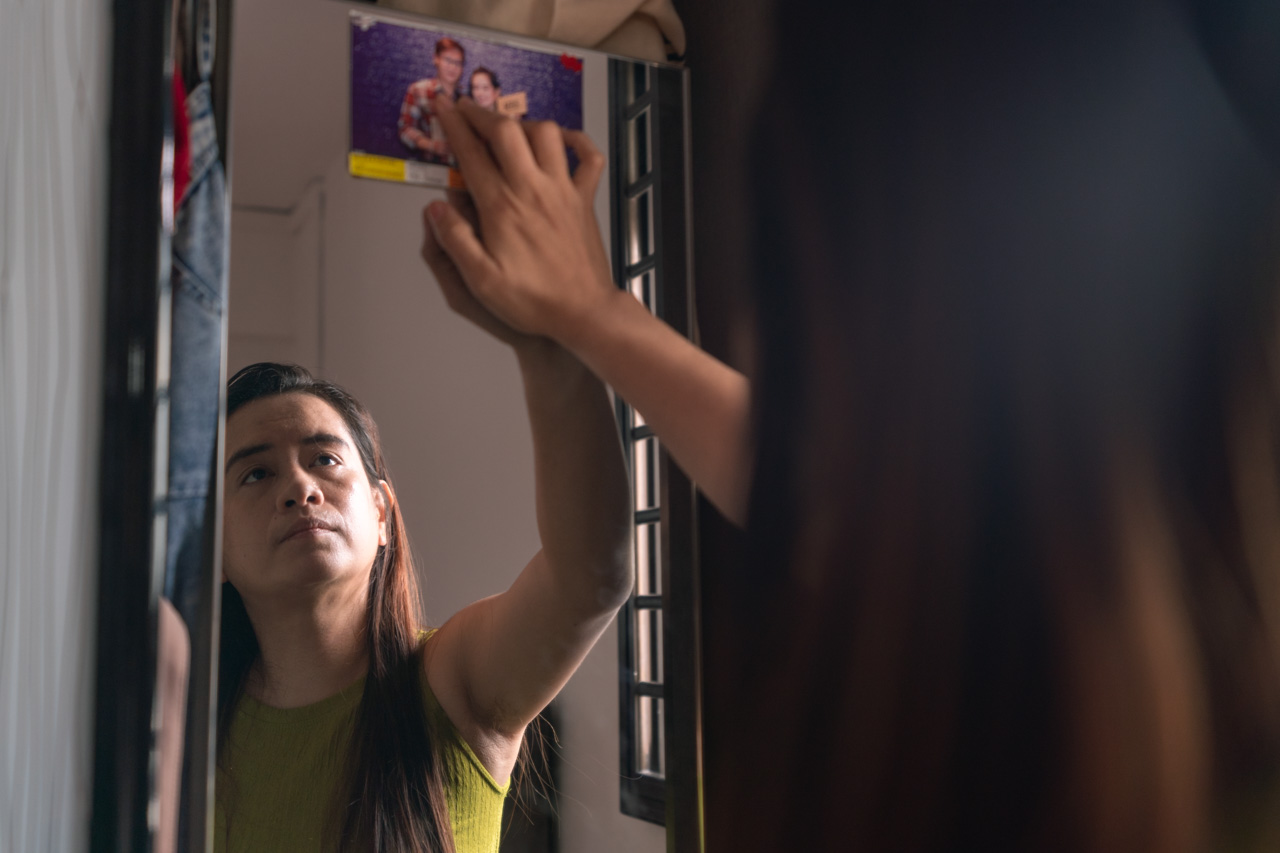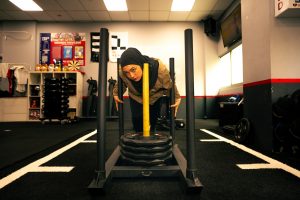All images by Stephanie Lee for RICE Media.
“Hos-… hos-… when the nurse and doctor come to your house,” stammered Carla Siaco, feeling embarrassed. The word she was looking for was ‘hospice’.
Carla’s stepsons figured out the word and would help convey what she was trying to say to the healthcare staff.
The 40-year-old had never heard of the word ‘hospice’ or the concept of external palliative care in her homeland of the Philippines.
But when her husband was diagnosed with aggressive stage four kidney cancer in 2022, she had to quickly familiarise herself with palliative care services and how to perform palliative duties. And she had to do so while still a non-citizen who was unfamiliar with Singaporean customs and lingo.

A Love Story Cut Short
Carla, a supermarket supervisor, found herself smitten with Johnny Ng, a logistical planner.
Johnny would visit her at her workplace, take her to restaurants like Swensen’s and scenic locations like Sentosa. Johnny was also a very good chef who cooked his way into her heart.
“I fell for him because he was sweet, caring and responsible.”
They had discussed marriage, but were unable to yet, because Johnny’s father had just passed on. And Chinese customs dictate that the deceased’s family should avoid joyous celebrations like weddings for a few years.

Carla, a divorcee, asked for a sign if Johnny was ‘the one’. Johnny fought hard to win her love and patiently waited for three years, which Carla took as the sign she asked for.
Their relationship endured. Carla and Johnny eventually tied the knot in 2016.
Carla wipes her tears away and brims with a huge smile when she recounts how happy their married life was.
“We travelled the world, enjoyed ourselves, and then Bryant came along in 2022.”
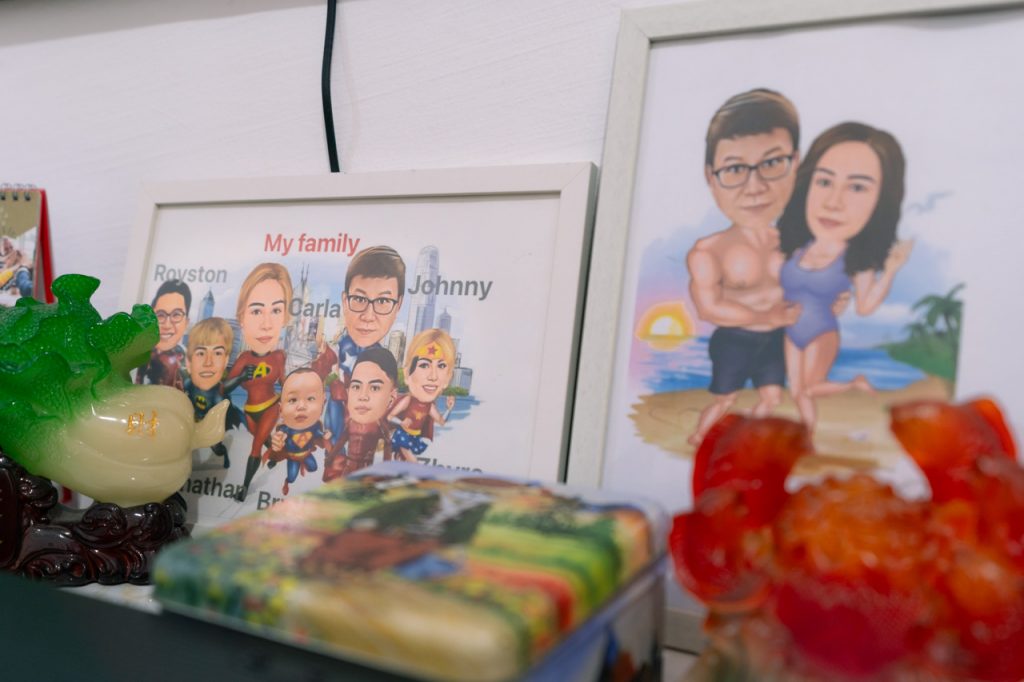
This would be the couple’s fifth child, as Carla had a son and a daughter from her previous marriage, and Johnny had two sons from his previous marriage.
The couple were delighted that they would be raising a newborn together, but this elation would be cruelly and abruptly curtailed.
A Sudden Death Sentence
In December 2022, Johnny told Carla that he felt unwell. He was already seeing a doctor every six months for his high blood pressure, so they decided to wait until his next appointment in February.
“Asawa,” Johnny exclaimed to Carla one night. Johnny rarely expressed panic or addressed Carla with the Tagalog word for ‘spouse’.
“I urinated blood.”
They rushed to the hospital, and tests revealed that an aggressive form of kidney cancer was ravaging Johnny’s internal organs.
“Sick still can cure. Doctors sometimes make mistakes,” Carla recalls thinking to herself at that moment.
When the doctors conveyed to them that Johnny had stage four cancer and a year to live, Carla burst into tears.
“I asked God up there, ‘Why?’ Why would God give me a baby and take my husband away? And leave me to raise Bryant alone?” Carla recounts asking.
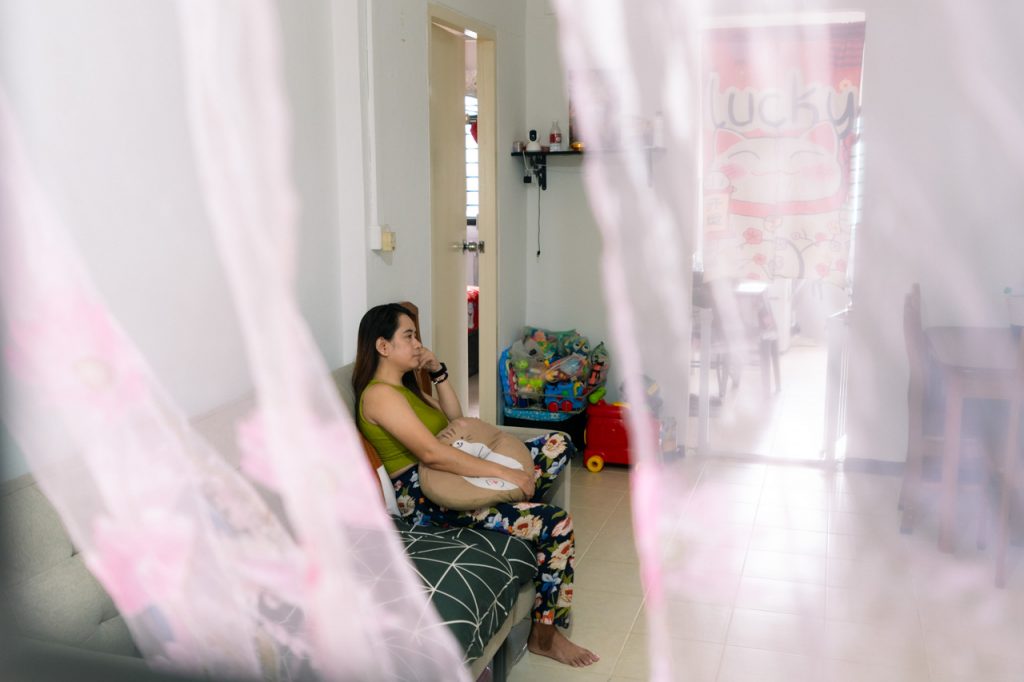
Carla still weeps bitterly whenever she thinks about that brutal time in her life. She wanted to put on a brave front for her husband, so she would cry only when she was away from Johnny. She used ice packs to reduce the swelling of her eyes.
“I didn’t want to show weakness and wanted to be strong for him. Johnny was a quiet person too and kept it all inside. We remained positive and fought the cancer together, trying many different alternative medicines, like traditional Filipino remedies, Chinese tonics and praying at certain temples.”
A logistics specialist, Johnny was a far-sighted planner who made comprehensive plans while he was still mobile so that his family would be well taken care of. He had no reservations about planning his funeral with his siblings and mother; he even instructed friends to support Carla after his departure.
Johnny’s body did not respond to his radiotherapy.
Introduction to Palliative Care
“You’ve taken all my blood,” he would remark jocularly in response to healthcare workers conducting his frequent blood tests. “I don’t want to stay in hospital anymore.”
Johnny had been in and out of hospital and now he just wanted to enjoy his final days in the comfort of his flat in Chinatown. Doctors recommended home hospice care, which baffled Carla. Hospices are uncommon and relatively unheard of in the Philippines.
“In the Philippines, there is no such thing as old people without relatives. We take our elderly relatives with us and never leave them behind, even if they are distant relatives. In the past, I’ve been the caregiver for my grandmother and even my brother-in-law’s mother.”
At first, Carla struggled with remembering how to pronounce “hospice”. She would be introduced by HCA Hospice to the many palliative care services available to Johnny. This home hospice care provider and registered charity also taught her how to care for Johnny—skills that came in useful as he gradually lost his physical strength and independence.
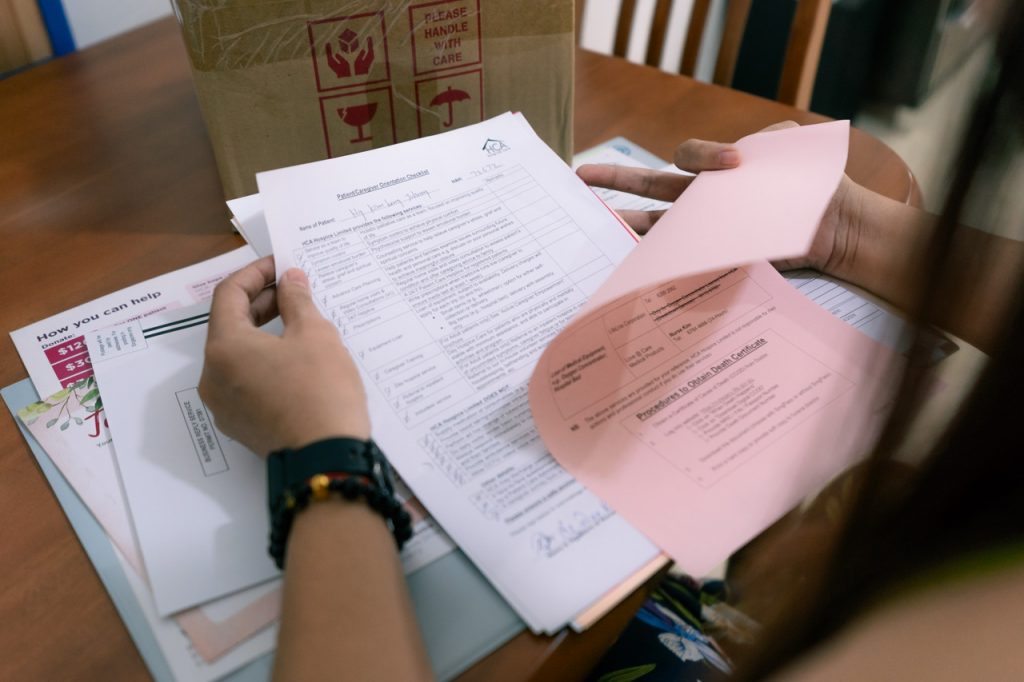
Palliative care focuses on alleviating the symptoms and improving the quality of life of patients with serious and limiting illnesses. However, few people are aware that personalising palliative care to address an individual’s specific physical, psychological, and spiritual issues, as well as cultural differences, requires a diverse team of healthcare professionals. And caregivers like Carla are indispensable to the palliative care process.
In this spirit of holistic palliative care, HCA Hospice has been attentive to not just Johnny’s needs, but also to Carla’s emotional needs, up till today.
She was taught how to operate the various medical equipment that Johnny required, take his blood pressure, change his diapers and bathe him. She was also given various medications that she could administer to Johnny if he experienced particular symptoms, like vomiting or hallucinations.
Besides visiting the couple regularly, HCA Hospice staff also gave her a hotline to call during emergencies. The HCA Hospice staff would call her regularly to check on Johnny’s health and also lend her moral support.
When Illness Thrusts Cultural Differences to the Fore
Although both husband and wife spoke English, their accents were difficult for their respective in-laws to understand. Johnny would translate Carla’s words to his mother in Hokkien, and his mother would try to speak Malay to Carla, as Tagalog-speaking Carla understands many similar words that are also found in both the Tagalog and Malay lexicon.
Johnny professed Thai Buddhism and Carla is Catholic, but they both agreed that the god above was one in the same.
“Out of respect, Johnny would follow me to Catholic Mass. And I would learn how to pray to his ancestors, burn incense, use the incense to remove negative energy from all corners of our house.”
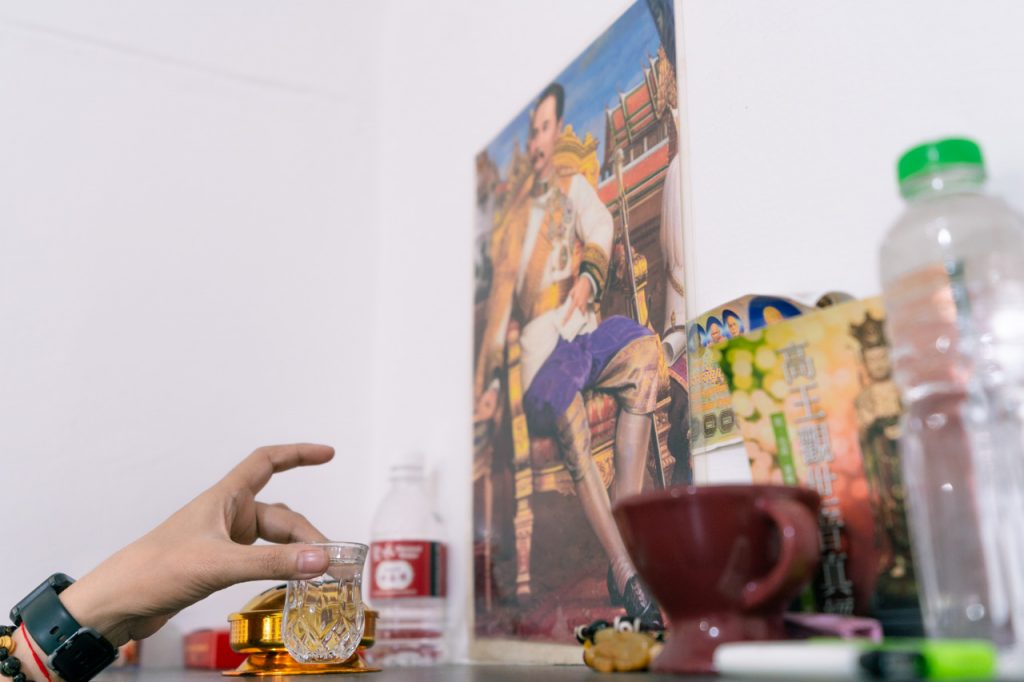
A self-professed workaholic, Carla was forced by circumstances to spend more time at home caring for her withering husband. Regardless of the time of day, she would push him in a wheelchair on “walks” whenever he wanted, and she would start to neglect putting on makeup and nice clothes.
Carla tried to cook Johnny’s favourite traditional Chinese meals and buy food from his favourite stalls, but Johnny soon became challenging to appease.
“When I ordered the wrong type of kopi for him, or bought food from the wrong stall, Johnny would scold me. Perhaps he was doing that to push me away so that I would hurt less when he died?” Carla proposes.
Nonetheless, Carla soldiered on, motivated by memories of Johnny caring for her when she was pregnant.
“When I was frustrated by our quarrels, I would call my kampung, and my tita (aunty) would explain to me that a medication or an illness might affect a patient’s body and their mind too,” she divulges.
“You must understand that he might not be himself when he is sick. Cherish the moments and make memories together, so that you won’t regret,” Carla’s tita advised her.
Carla feels assured that she did her best for Johnny.

In Sickness and In Health
She is eternally grateful to HCA Hospice for training her to adequately care for Johnny.
Over that unforgettable year, Carla was able to feed him, clean him, and administer medication to him confidently. She recommends that anyone with seriously ill family members to actively learn more about palliative care.
“I am thankful that God gave us one more year to make memories together,” she discloses.
Johnny insisted on visiting the Philippines, and he managed to do so with his extended family in February 2024.
Johnny’s final wish was for Carla to bring Bryant to see Johnny’s mother every Sunday, an activity which he intended to help keep Carla and Bryant close to Johnny’s mother. Carla has also fostered a close relationship with Johnny’s sons from his first marriage, working adults who lived under different roofs who were brought closer to the couple by Johnny’s illness.
“Johnny said that he was sorry but told me that I had to be brave to face the future.”
In April 2024, just before Johnny passed away at the age of 58, Carla pushed him on a long, scenic walk around Marina Bay Sands.
Before midnight that night, Johnny gestured to Carla to come closer. He hugged Carla and kissed her hand.
“Now I realise that it was his way of saying goodbye and thanking me for taking care of him.”


